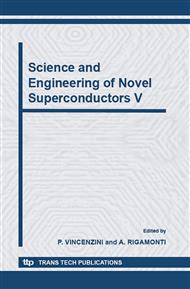p.180
p.188
p.195
p.204
p.212
p.220
p.228
p.238
p.246
Status and Prospects of HTS Synchronous Machines
Abstract:
Up to now most of the efforts for developing HTS technology have been directed to devices for grid applications. However, HTS synchronous machines as motors and generators become more and more interesting within the world-wide development programs. Replacing the copper winding of the rotor by an HTS one and introducing an iron-less aircore stator winding the very compact HTS machine has less than half the weight and volume, higher efficiency and an excellent operational behavior when compared to the conventional devices. These features make HTS rotating machines very attractive for e.g. ship drives and industrial applications for the processing industry and power generation in power plants and wind parks. World-wide, HTS machines have already demonstrated their advantages and technical feasibility. The prototypes are ranging from the 5 MW low-speed high-torque propulsion motor to the high-speed 3600 rpm 4 MVA HTS generator. Feasibility studies clearly show the financial benefits when introducing high-efficient HTS wire based rotors into a large scale power generator systems. At present, most of the industry driven activities take place in the United States, Germany, Japan and Korea and are mainly directed towards applications aboard ships. Further potential applications as well as the technical and economic benefits will be discussed.
Info:
Periodical:
Pages:
228-237
Citation:
Online since:
October 2006
Authors:
Price:
Сopyright:
© 2006 Trans Tech Publications Ltd. All Rights Reserved
Share:
Citation:


